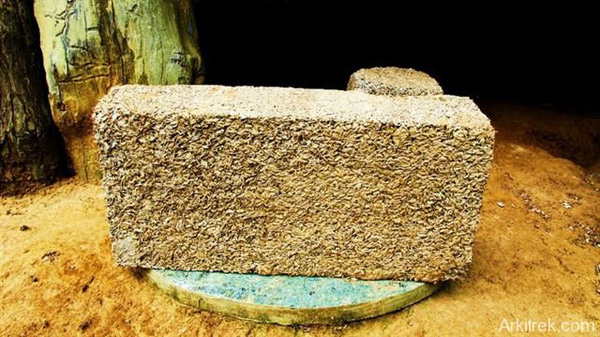
Introduction to the wonders of bio-crete and why its use may mitigate environmental destruction and create more comfortable low-carbon buildings.
What is Bio-crete?
Bio-crete is a concrete-like material based on a mixture of natural fibre and hydrated lime or calcium hydroxide (hereinafter referred to as lime). In Europe hemp fibre is often used. In Malaysia, where hemp is hard to come by, we’ve looked to coconut coir, oil palm kernel fibre or rice husk. Often these fibres are found as agricultural waste.
How Does it Work?
In a typical concrete mix, cement binds together mineral aggregates of varying sizes to produce a dense material with high compressive strength. In bio-crete, natural fiber replaces most of the aggregate and lime is used as the binder. Sand can also be added to bio-crete to increase density, thereby increasing its load bearing capacity but at the cost of its thermal insulating properties. The lime binder hardens by reacting with carbon dioxide to form calcium carbonate. Some sources suggest that in natural fibres with a high silica content (rice husk, hemp shiv) a petrification process occurs which extends the lifespan and increases the compressive strength of bio-crete.
More at the source: Arkitrek.com (Fascinating website… take a look.)
Related:
Cococrete
Bongkud bricks

Hello! My name is Morgan Ræ and I am the Founder, CEO & Design Director of L’eautelier. We are trying to find a specialist in cococrete for a current hospitality project. We would be most grateful for any direction you can provide. Thank you!
There are thorough instructions at https://arkitrek.com/cococrete-mixing-instructions/
sir can i known is this biocrete haveing water holding capacity
I would expect these materials to be able to take on moisture, since all of the components do: lime, hemp, coir, etc.
Hey Owen. I am curious if you have done any work with marble dust. I have basically an unlimited supply of it and am wanting to put it to use in building my home. Obviously it can be used when applying Tadelak, but I am curious if it could be mixed with clay in earth bags as the amount of clay on my site is quite low and don’t have enough to use clay exclusively. Any thoughts?
Sure, you could combine it with clay. However, you could create a much higher value product if you have the time and resources to pursue this. Marble dust is a high value material with excellent potential. One option is green bricks: https://naturalbuildingblog.siterubix.com/greeneco-friendly-brick-options/
Here’s a company in California who could potentially make tons of money if their new mass production machinery works out: https://naturalbuildingblog.siterubix.com/ingenious-new-building-method-replaces-concrete-block-with-rammed-earth/ (You don’t have to mass produce if you don’t want, of course.)
Our blog has many stories of similar natural/sustainable products: geopolymer, aerated concrete, etc.
I understand there is a company that is developing a preservative/epoxy for the Hemp or Hibiscus fibers. If it is perfected it will increase compression and tinsel strength and only be 1/3 the weight of aggregate concrete.
It’s in the testing stage now. You could use it for boat hulls. I doubt it will be better than fiber glass but it would be better than aggregate concrete for building and bridge construction with rebar which oxidizes.
Do you have a link?
A company called Blue World Crete claims their cement substitute caused mineralization of cellulose. I was wondering if anyone on here has ever used their stuff and could verify or refute the claims in their youtube videos.
It’s probably true. There are lots of similar products like bio-crete, hempcrete, etc. that gradually turn stone-like.
Another one of many options, Arkitrek is using rammed biocrete. They ram it in forms much like rammed earth, although it would be lighter and eventually turn to a stone-like material much like hempcrete (especially with a pozollana such as rice hull ash mixed in). Pigments can be added to make any color walls you want.
http://arkitrek.com/http:/arkitrek.com/wonders-bio-crete/
Note the earthbags in the background. They’re working with lots of different materials.